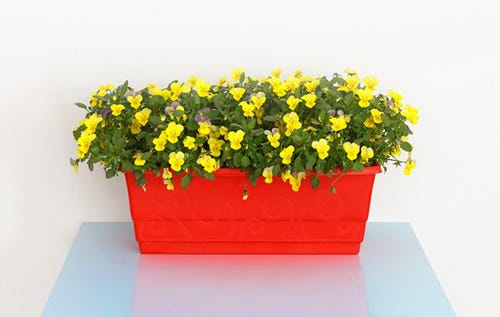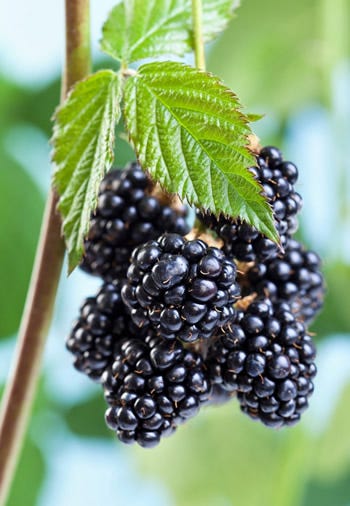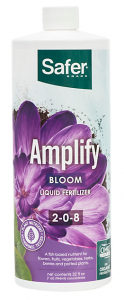
All of the elements and symbols on fertilizer labels can make feeding your indoor crops feel a bit like a complicated chemistry lesson. But you don't have to go back to high school to learn what you need to know to be a successful grower. This simple guide explains why specific minerals are vital to plants and what happens when they don't go without. Plants rely on these dozen nutrients throughout their life cycle, even as the demand varies as they grow and mature. Even more important, these minerals work together and need all the others present to function.
THE PRIMARY MINERALS
For steady, healthy growth, plants need a constant, well-balanced supply of these three minerals. The amount your plants use of each primary nutrient varies during their growth cycle – from seedling to leafy growth to flowering – but all are necessary throughout plants' lives. You need to provide these in the form of nutrient solution to crops grown in indoors, whether you have a hydroponic or soil-based system.
Nitrogen (N)
Key functions: When plants absorb nitrogen, it's transformed into amino acids, the proteins that are the building blocks of all cells. Nitrogen is especially vital to the production of chlorophyll, the green pigment in plant leaves that converts energy from light into the carbohydrates plants feed on. Plants need nitrogen most early in their lives, when they are most actively growing stems, branches and leaves. Waste from fish processing, sometimes called “acidulated fish tankage,” and fermented corn extracts (which are high in Lysine, a potent amino acid) are healthy, sources of nitrogen.
Deficiency symptoms: Yellowing of leaves, starting with the oldest (lowest on the stem). The rest of the plant tends to look light green.
Phosphorus (P)

Key functions: Phosphorus is like a power station within plants, playing a role in every process that involves energy transfer from one function to another. These energy transfers include growing roots or forming flowers and fruit. Phosphorus initiates the transformation of nitrogen into amino acids and it is the trigger that converts sunlight into carbohydrates. This element is most in need during transitional periods in plants growth, such as the end of vegetative growth and the beginning of the flowering stage. Bone meal provides plants with a concentrated dose of phosphorus.
Deficiency symptoms: New leaf tips appear burnt, while older leaves turn dark green to reddish-purple.
Potassium (K)
Key functions: Plants “breathe” carbon dioxide through tiny pores in the leaves known as stomata. When potassium moves into the cells around the stomata, the cells collect water and swell, allowing the pores to open and CO2 to enter. When water supplies are less than optimal, the potassium in the cells around the stomata recedes, closing the pores to prevent water loss and minimizing drought stress. When plants begin to flower, potassium is a catalyst in the manufacture and delivery the starches and sugars needed for the blossoms to fully form. Sulfate of potash is a naturally occurring mineral used in organic plant fertilizers.
Deficiency symptoms: Older leaves wilt, then begin to look scorched around the edges.
THE SECONDARY MINERALS
Plants need an abundant supply of these three minerals, which are common in most soils but must be provided via nutrient solution to hydroponic crops.
Calcium (Ca)
Key functions: Just as people need calcium in their diets for strong teeth and bones, plants need the mineral to build sturdy cell walls and healthy root systems. Calcium also helps transport other nutrients from the roots to the leaves and flowers.
Deficiency symptoms: The newest leaves (at the top of the plant) are irregularly shaped or distorted.
Sulfur (S)
Key functions: Sulfur is a critical partner to nitrogen, because it plays a key role in turning N into amino acids and chlorophyll. Sulfur activates growth enzymes and it is a major component of the essential oils that give flowers and fruit their scent and flavor. Manure and compost typically have high sulfur content. Sulfuric acid is used to transform bones and other animal by-products into fertilizer, while sulfate of potash provides your plants with both potassium and sulfur.
Deficiency symptoms: The youngest leaves turn yellow, followed by older leaves.
Magnesium (Mg)
Key functions: As the central atom in the chlorophyll molecule, magnesium plays a critical part in photosynthesis. It also plays an essential role in the many enzymes that activate different stages of plant life cycles. Dolomitic limestone, a common amendment to garden soils, is a rich source for both magnesium and calcium. It's also a key element in Epsom salts, known chemically as magnesium sulfate.
Deficiency symptoms: Older leaves turn yellow at edge leaving a green arrowhead shape in the center of the leaf.
THE MICRO MINERALS

These six nutrients are just as vital as the six above to growing healthy plants, but your crops need only tiny amounts of them.
Copper (Cu)
Key functions: In a variety of ways, production of flowers, fruit and seeds depend on an adequate supply of copper. It also plays a prominent role in converting amino acids into the proteins used for new cells. A high pH in the nutrient solution inhibits uptake of copper by plant roots.
Deficiency symptoms: The leaves are too dark green and growth is stunted.
Zinc (Zn)
Key functions: Zinc is essential for the metabolism of the carbohydrates that fuel plant growth and for the production of auxins, hormones that stimulate plants' stems to grow upward. Excess zinc can obstruct plants' uptake of phosphorus, iron, manganese and copper.
Deficiency symptoms: Terminal leaves – those at the end of each stem or branch – don't form properly and yellowing occurs between their veins.
Iron (Fe)
Key functions: Just like in human blood, iron in plants helps carry oxygen around to all of the cells. It also works in concert with other minerals to produce chlorophyll and it aids in the metabolism of sugars and other carbohydrates.
Deficiency symptoms: The veins of young leaves turn yellow, a condition known as "chlorosis."
Manganese (Mn)
Key functions: Easily confused with magnesium, manganese is an essential element in the enzymes that trigger germination and new growth on plants of all ages. It also plays a role in carbohydrate metabolism. Manganese deficiency is uncommon, but it has similar symptoms to iron deficiency, because plants need Mn to use iron.
Deficiency symptoms: Yellowing occurs between the veins of young leaves, but the pattern is not as regular as you see with iron deficiency.
Molybdenum (Mo)
Key functions: Molybdenum is a vital component of the enzymes that drive the formation of flower pollen as well as the uptake and processing of both nitrogen and phosphorus.
Deficiency symptoms: Older leaves become yellow, while the rest of the plant becomes light green.
Boron (B)
Key functions: Boron partners with calcium, helping it to form cell walls and move sugars around the plant. It also aids in the plants' uptake and absorption of calcium. High pH in the nutrient solution and high humidity inhibit plants' absorption of boron.
Deficiency symptoms: Branches and new growth are distorted, thick and brittle. The uppermost leaves may have splotches of yellow. Unlike most nutrient deficiencies that typically exhibit symptoms uniformly, a lack of boron can appear randomly within a crop.
HYDROPONIC FERTILIZERS
To give your hydroponic plants a strong start and then fuel them into final bloom, look to Safer® Brand Hydro for your fertilizer needs. Safer® Brand offers five fertilizers to match the growth stage you’re concentrating on:
- Awaken – Cuttings & Seedlings
- Accelerate – Vegetative Growth
- Amplify – Transition into Bloom
- TruAmino+ – Blooming & Ripening
- TruBone+ – Vegetative through Ripening
For more assistance with selecting the proper fertilizer for your needs, contact the Safer® Brand consumer care center and consider subscribing to our E-Newsletter, where we provide you with helpful articles, issue new product announcements and offer links to our OMRI Listed® products.




